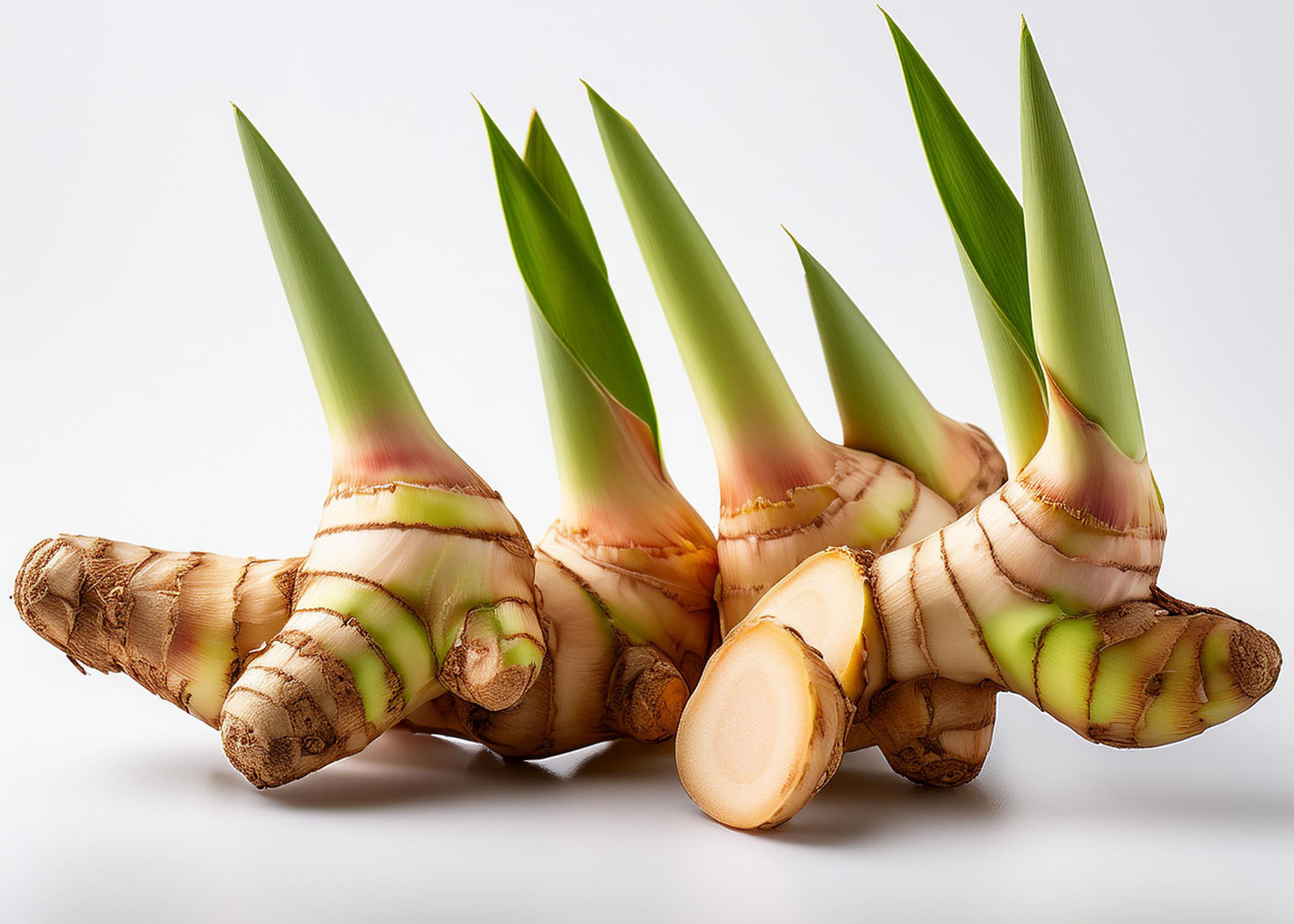Botanical Name: Alpinia galanga
Galangal is a fragrant and spicy root that belongs to the ginger family and is widely used in Southeast Asian cuisine, particularly in Thai, Indonesian, and Malaysian cooking. Often mistaken for ginger due to its similar appearance, galangal has a distinct flavor and aroma that sets it apart. Known for its sharp, peppery bite and citrusy notes, galangal adds depth and complexity to a variety of dishes, particularly soups, curries, and stir-fries.
Galangal looks very similar to ginger, with a firm, fibrous root that is light brown on the outside and pale yellow or white on the inside. However, galangal’s texture is tougher and woodier than ginger, and it’s often more difficult to slice. The flavor of galangal is much more pungent and spicy than ginger, with a pronounced citrusy and peppery kick. It has subtle hints of pine and earthiness, making it more aromatic and complex. Unlike ginger’s warming heat, galangal’s spice has a sharper, more refreshing quality.
Galangal is a staple ingredient in Thai and Indonesian cooking, where it is used to add bold flavor to soups, curries, and sauces. One of its most famous applications is in Tom Yum, the classic Thai hot and sour soup, where galangal’s citrusy, peppery flavor balances the soup’s spicy and sour elements. It’s also a key ingredient in Tom Kha Gai, a creamy coconut milk-based Thai chicken soup, where it pairs beautifully with lemongrass and lime leaves to create a rich, aromatic broth.
In Indonesian cuisine, galangal is used in spice pastes for rendang, a slow-cooked beef dish, and in various curries and stir-fries. The root is often thinly sliced or pounded into a paste before being added to dishes. Its intense flavor means it’s usually removed before serving, as it can be tough and fibrous to eat.
Galangal is also used in marinades for seafood and meat, where its citrusy spice helps to tenderize the protein and infuse it with bold flavor.

